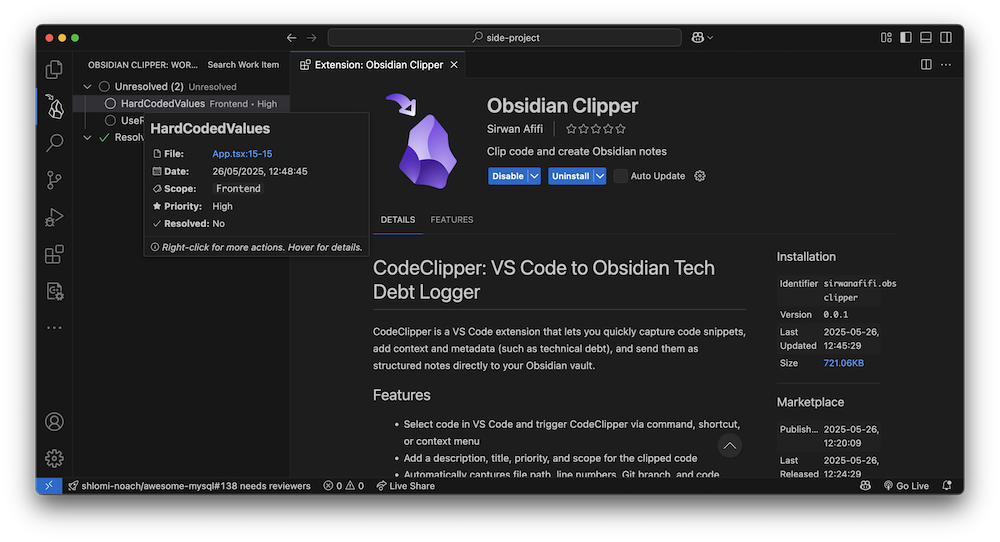Sending Code from VS Code to Obsidian
If you’ve seen how I use Obsidian to publish blog posts, you know I care a lot about smooth workflows. One gap I kept running into: there wasn’t a great way to quickly save bits of code—bugs, TODOs, oddities, or just thoughts—straight from VS Code into my notes.
So this weekend, I finally built what I needed: CodeClipper, a small extension that sends code snippets from VS Code directly into my Obsidian vault.

The Problem
I’m often jumping between writing code and jotting down ideas. Copying a snippet, switching to Obsidian, creating a note, pasting it in, adding some context, then figuring out what file or branch it came from, it’s too much friction for something I want to do in a few seconds.
What CodeClipper Does
With CodeClipper, you just:
- Select code in VS Code
- Hit a shortcut
- Fill out a small form (optional: add a description, tag it, set priority)
- Done. A clean, timestamped note lands in your vault with all the metadata: file path, repo, branch, author (via
git blame), etc.
You can configure your vault name, default folder, and tag presets. It even opens the note automatically if you want to edit further.
PS: You can also use GitHub Copilot to generate the description for you, which is a nice touch.
Under the Hood
VS Code’s extension API is better than I expected intuitive and well-documented. Most of the time went into:
- Getting Git metadata reliably (and handling no-repo edge cases)
- Talking to Obsidian via its
obsidian://URI handler - Making the input form simple but flexible, using a webview
Why It’s Helpful (At Least for Me)
I use this mostly for tracking “tech debt” moments—stuff I want to revisit but can’t fix right now. Before, I’d try to remember it or bury it in a TODO. Now, I can send it to Obsidian in under 10 seconds, and it’s waiting for me in my tech-debt/ folder.
Final Notes
This was one of those projects that scratched a very specific itch. I built it for myself, but if you use VS Code and Obsidian together, it might save you a lot of friction too.
Here’s the GitHub repo if you want to check it out or contribute.